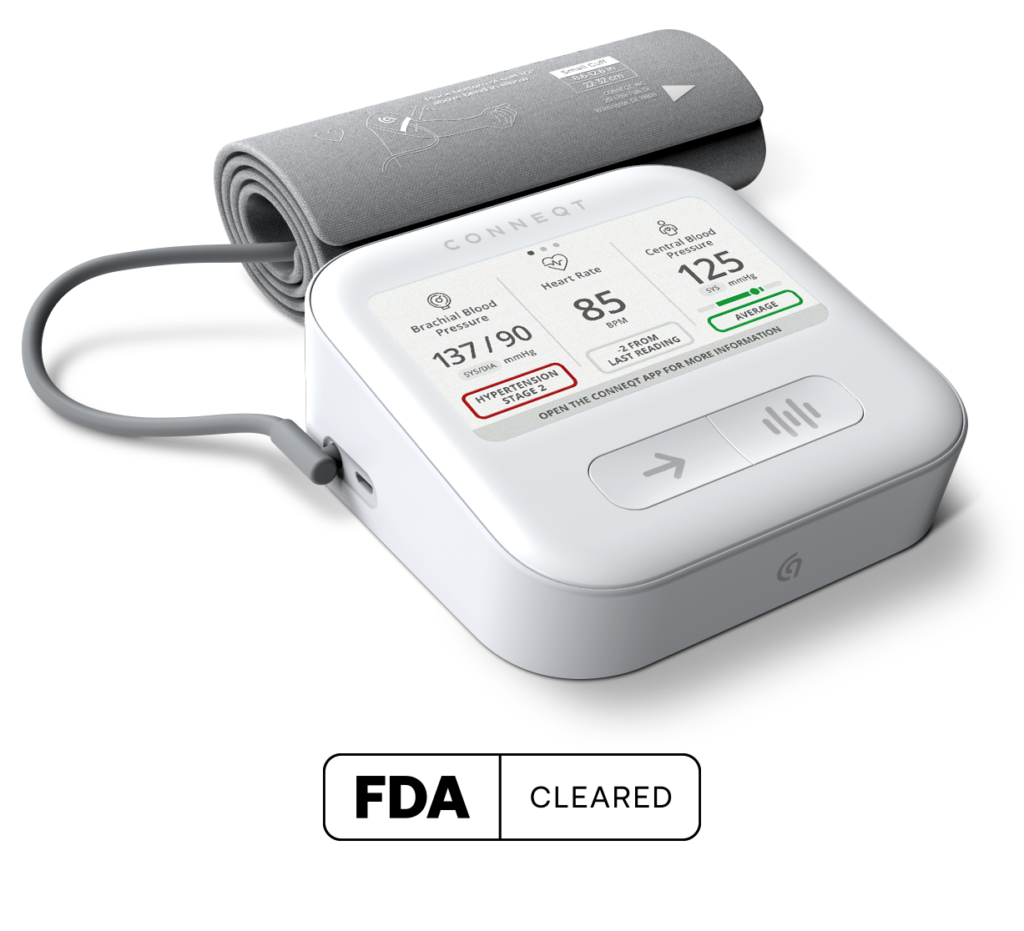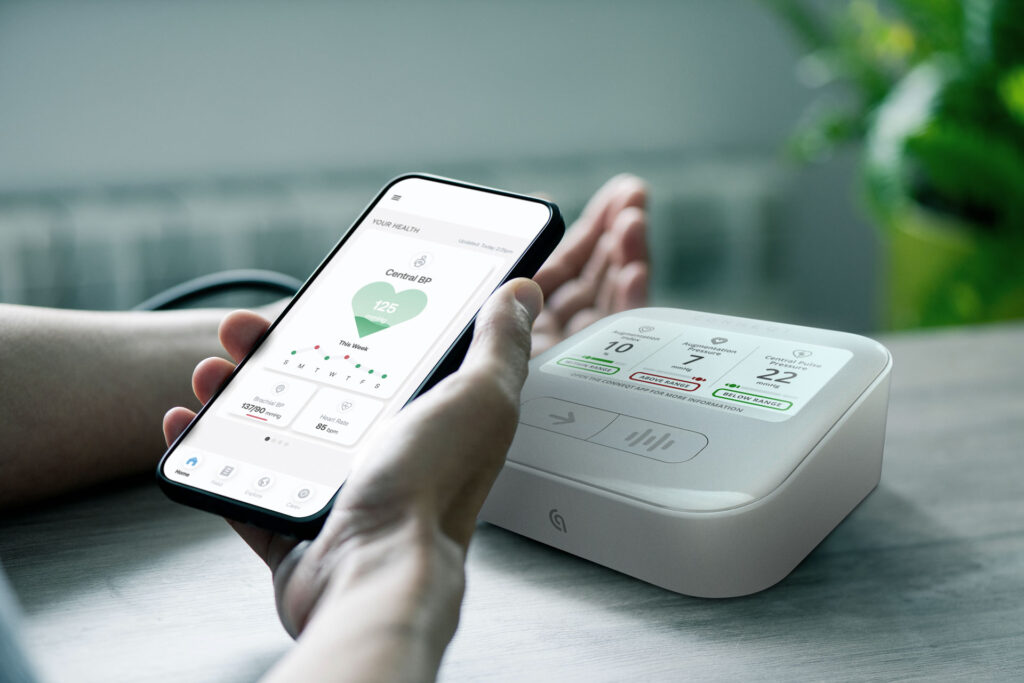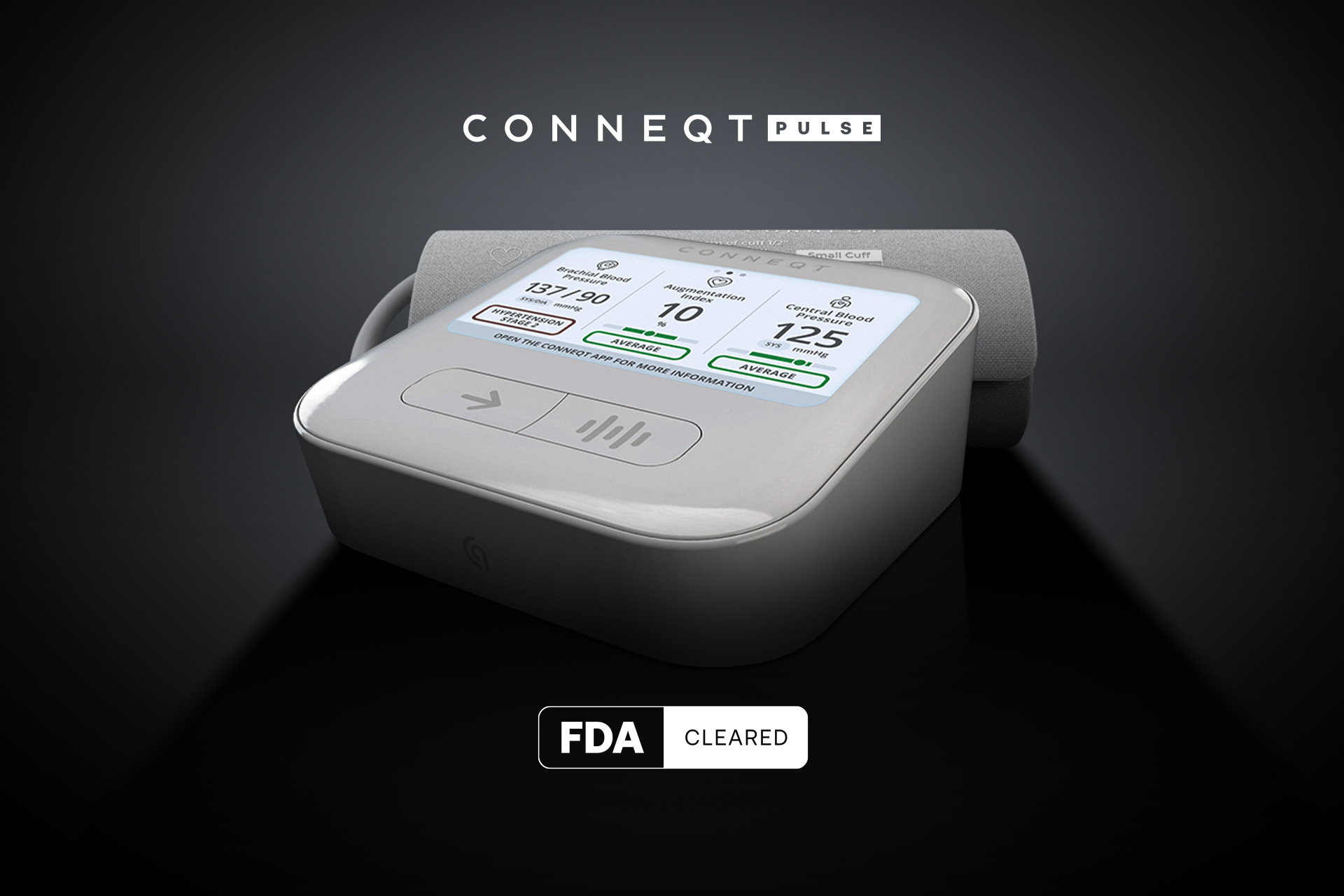In a significant development in the fight against hypertension and vascular disease, the United States Food and Drug Administration (FDA) on Friday granted 510(k) clearance for the CONNEQT Pulse, a dual blood pressure monitor that provides both brachial and central blood pressure measurements along with arterial waveform analysis.
The Importance of the FDA 510(k) Clearance for CONNEQT Pulse
This state-of-the-art medical device, developed by CONNEQT, a subsidiary of global health tech company Cardiex, provides heart health insights previously only available in specialist doctors’ offices, hospitals, and research facilities. Powered by Cardiex’s patented SphygmoCor® technology, in use for over two decades by leading hospitals and research facilities all over the world, the Pulse measures key arterial health indicators, including brachial blood pressure (the blood pressure at your arm) and central blood pressure (the blood pressure at your heart), augmentation index (an indirect measure of arterial stiffness), and multiple other clinically relevant digital vascular biomarkers. Patients can view the Pulse’s measures and also transmit them to their physicians and care providers for assessment. Together, these indices provide a much more comprehensive and precise picture of vascular health than a traditional brachial home blood pressure monitor.

“CONNEQT Pulse’s 510(k) clearance by the FDA marks a major milestone in the field of cardiovascular health management,” says Craig Cooper, CEO of Cardiex, the parent company of CONNEQT. “We are thrilled to offer individuals with hypertension an innovative new way to monitor their arterial health at home in conjunction with their healthcare provider using the same tools the country’s top cardiologists use in their research facilities and clinics. This technology has the potential to truly revolutionize the way hypertension and vascular disease is diagnosed and managed in the future.”
Heart Disease Is the Number One Killer in the US
In the United States, one person dies every 33 seconds from cardiovascular disease, according to the CDC. According to the newest guidelines, revised in 2018, nearly half of all American adults now meet the criteria for high blood pressure (defined as a reading over 130/80 mmHG).
According to the American Heart Association, up to one-third of Americans who suffer from high blood pressure aren’t even aware they have it. Experts say current diagnostic protocols—which often don’t include regular monitoring of central blood pressure—allow many people suffering from this silent killer to fall through the cracks. The FDA’s 510(k) clearance of the CONNEQT Pulse has the potential to help dramatically stem this epidemic by improving access to, and reliability of, remote patient monitoring with advanced vascular biometric insights.
The Importance of Central Blood Pressure
Research shows that central aortic pressures can be considered to have independent and higher predictive value for the consequences of hypertension, such as heart disease, stroke, vascular disease, and kidney failure, relative to traditional brachial blood pressure. This is because central pressures reflect the pressure directly exerted on vital organs such as the heart, brain, and kidneys.
“A traditional brachial cuff measures pressure in your arm, but that’s not the same as the pressure in your heart,” says Ray Townsend, M.D., a nephrologist in the Hypertension Section at the University of Pennsylvania. To get an accurate picture of cardiovascular risk, he says you need to measure central aortic systolic pressure and other vascular biomarkers because they can reveal underlying problems like arterial stiffness—a measure of the rigidity of blood vessel walls.
When vessels are stiff, blood flows more swiftly through the arterial tree, causing it to return to the heart prematurely. This hemodynamic variability explains why central blood pressure can differ from brachial by up to 40 mmHg higher—and why this measurement is often a more accurate predictor of cardiovascular issues than brachial measurements alone. “Let’s face it, nobody ever dies of an arm attack,” says Dr. Townsend.
How Does the CONNEQT Pulse Work?
The Pulse uses the same pulse wave analysis technology that cardiologists use in clinical settings to predict pressure where it matters most: near the aorta. With FDA 510(k) clearance, the Pulse ensures accuracy and reliability in home-based cardiovascular monitoring.”

“When doctors use a traditional brachial cuff alone, all they see is the top of the curve [systole] and the bottom [diastole],” explains Joseph Raffaele, M.D. the founder of Physioage, a cutting-edge medical platform focused on longevity medicine. “All the other information about the pulse wave—how fast the blood is moving, how much of the pulse is reflected—is lost. The shape of the wave provides health care providers with much more insight into the health of the arterial tree.”
Advanced Features of the CONNEQT Pulse
In addition to central and brachial blood pressure, the CONNEQT Pulse measures five other clinically relevant digital vascular biomarkers: subendocardial viability ratio, heart rate, central pulse pressure, augmentation pressure, and augmentation index. Physicians and clinical researchers can also remotely monitor these advanced biomarkers without requiring patients to leave the comfort of their homes. The ability to monitor patients remotely reduces the risk of white-coat hypertension. The capability is also valuable in decentralized clinical trials (i.e., previous clinic-based trial procedures that researchers can now perform and monitor in the patient’s home).
Remote Monitoring and Customization
Available for prescription for hypertensive patients who need to monitor their heart health, the device offers a user-friendly interface that makes it easy for individuals to track their blood pressure and other biomarkers regularly, empowering them to take more control of their cardiovascular health. The FDA 510(k) clearance ensures the device meets high standards for safety and efficacy. After a patient takes a reading, the device wirelessly transmits the data to the CONNEQT Patient Management Portal, a cloud-based, HIPAA-compliant database that allows physicians to view patients’ arterial health metrics remotely. The CONNEQT app provides the same benefit for patients, giving them easy access to sophisticated insights into their cardiovascular health, tracking trends over time, and enabling more informed discussions with their healthcare providers.
Fully customizable, the app allows both clinicians and patients to choose which parameters patients see on the Pulse, enabling them to personalize their screens based on their specific health conditions. For example, a patient at risk for Alzheimer’s may wish to prioritize the display of central pulse pressure and augmentation index – key indicators that can influence brain health. The Pulse is the first at home blood pressure device to offer this level of customizable cardiovascular insight.
The Impact of 510(k) Clearance on Hypertension Management
“The ability to detect subclinical arterial damage before it evolves into full-blown hypertension places the CONNEQT Pulse in a potential breakthrough position in the prevention and management of hypertension and related diseases affected by impaired vascular function such as Alzheimer’s and most kidney diseases,” says Dr. Townsend. “It can improve remote patient monitoring, potentially benefitting patient outcomes, by adding a component of vascular monitoring previously available only clinical trials.”
“This is a monumental achievement not just for CONNEQT, but for the heart health community as a whole,” Cooper says. “This revolutionary device will undoubtedly help both patients and physicians alike, and we’re confident many lives will be saved as a result. The Pulse is the culmination of over 50 years of hemodynamic research and our market leadership in non-invasive central blood pressure devices.”
The Pulse was released commercially in November 2024. Click here to purchase your Pulse today.









